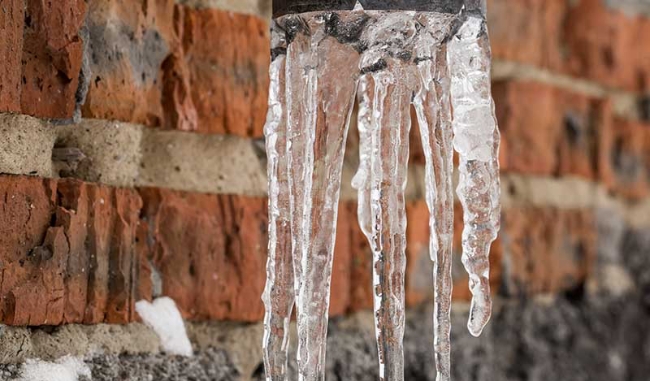Are you interested in facts and techniques concerning Preventing and dealing with frozen pipes?

Cold weather can wreak havoc on your pipes, especially by freezing pipelines. Right here's how to avoid it from taking place and what to do if it does.
Introduction
As temperatures decline, the risk of icy pipes boosts, possibly resulting in costly repair services and water damage. Understanding exactly how to avoid icy pipelines is essential for homeowners in chilly environments.
Prevention Tips
Protecting susceptible pipelines
Wrap pipes in insulation sleeves or use warm tape to protect them from freezing temperature levels. Concentrate on pipelines in unheated or external locations of the home.
Heating techniques
Keep indoor rooms properly warmed, particularly areas with plumbing. Open up cabinet doors to allow cozy air to distribute around pipes under sinks.
Exactly how to recognize frozen pipes
Search for decreased water flow from taps, uncommon smells or noises from pipes, and visible frost on exposed pipelines.
Long-Term Solutions
Structural modifications
Consider rerouting pipes far from exterior wall surfaces or unheated areas. Include added insulation to attic rooms, basements, and crawl spaces.
Updating insulation
Purchase high-grade insulation for pipelines, attics, and walls. Correct insulation assists keep consistent temperatures and decreases the threat of frozen pipelines.
Shielding Outside Plumbing
Garden hoses and outdoor taps
Separate and drain yard pipes before winter. Install frost-proof spigots or cover outside faucets with shielded caps.
Comprehending Icy Pipes
What causes pipelines to freeze?
Pipes freeze when revealed to temperatures listed below 32 ° F (0 ° C) for extended periods. As water inside the pipes freezes, it broadens, taxing the pipe walls and potentially creating them to rupture.
Risks and damages
Icy pipelines can result in water disturbances, home damages, and expensive repairs. Burst pipelines can flood homes and create comprehensive structural damages.
Indicators of Frozen Piping
Recognizing icy pipelines early can stop them from rupturing.
What to Do If Your Pipes Freeze
Immediate actions to take
If you presume icy pipes, keep faucets open up to eliminate pressure as the ice melts. Make use of a hairdryer or towels soaked in warm water to thaw pipes gradually.
Verdict
Stopping frozen pipelines needs aggressive steps and fast responses. By understanding the reasons, indications, and safety nets, house owners can protect their plumbing during cold weather.
5 Ways to Prevent Frozen Pipes
Drain Outdoor Faucets and Disconnect Hoses
First, close the shut-off valve that controls the flow of water in the pipe to your outdoor faucet. Then, head outside to disconnect and drain your hose and open the outdoor faucet to allow the water to completely drain out of the line. Turn off the faucet when done. Finally, head back to the shut-off valve and drain the remaining water inside the pipe into a bucket or container. Additionally, if you have a home irrigation system, you should consider hiring an expert to clear the system of water each year.
Insulate Pipes
One of the best and most cost-effective methods for preventing frozen water pipes is to wrap your pipes with insulation. This is especially important for areas in your home that aren’t exposed to heat, such as an attic. We suggest using foam sleeves, which can typically be found at your local hardware store.
Keep Heat Running at 65
Your pipes are located inside your walls, and the temperature there is much colder than the rest of the house. To prevent your pipes from freezing, The Insurance Information Institute suggests that you keep your home heated to at least 65 degrees, even when traveling. You may want to invest in smart devices that can keep an eye on the temperature in your home while you’re away.
Leave Water Dripping
Moving water — even a small trickle — can prevent ice from forming inside your pipes. When freezing temps are imminent, start a drip of water from all faucets that serve exposed pipes. Leaving a few faucets running will also help relieve pressure inside the pipes and help prevent a rupture if the water inside freezes.
Open Cupboard Doors
Warm your kitchen and bathroom pipes by opening cupboards and vanities. You should also leave your interior doors ajar to help warm air circulate evenly throughout your home.

Hopefully you enjoyed our section on 6 Ways to Prevent Frozen Pipes. Thanks so much for taking time to browse our article post. Enjoyed our post? Please share it. Let somebody else find it. Thank you for taking the time to read it.
Give Me A Quote!
Comments on “Important Tips to Avoid Frozen Pipes in Winter: Professional Guidance”